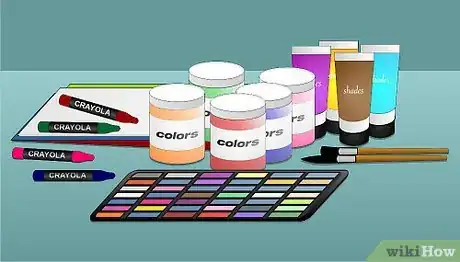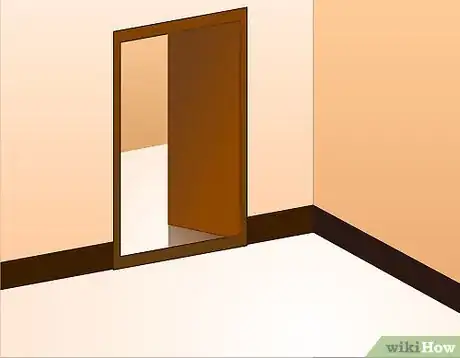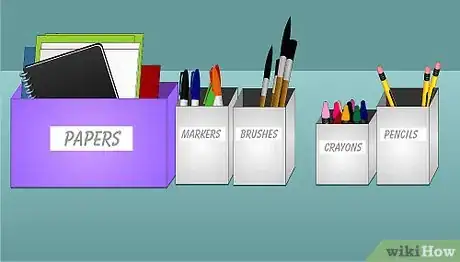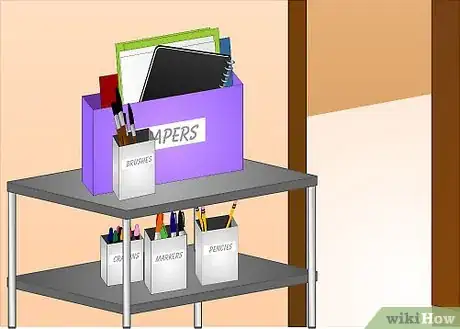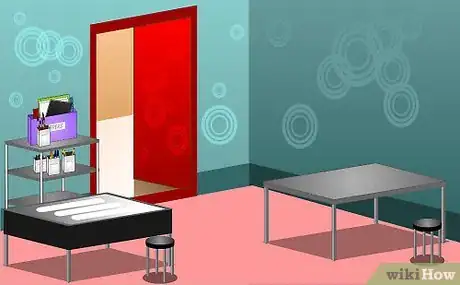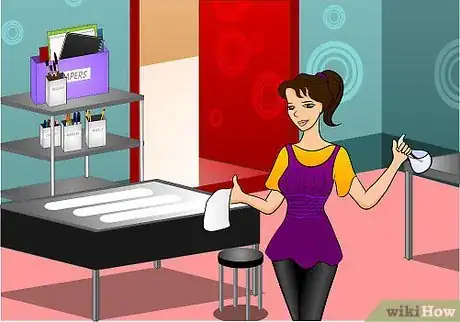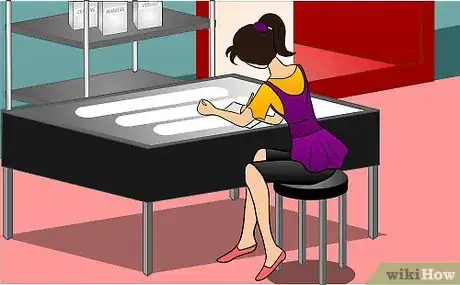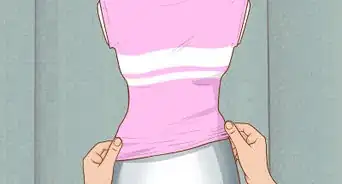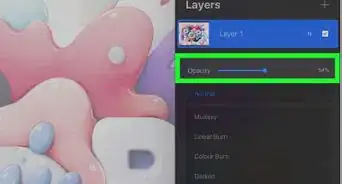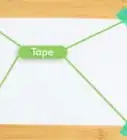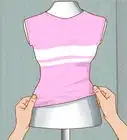X
wikiHow is a “wiki,” similar to Wikipedia, which means that many of our articles are co-written by multiple authors. To create this article, 16 people, some anonymous, worked to edit and improve it over time.
This article has been viewed 65,869 times.
Learn more...
Are you an artist that needs a quiet, peaceful, organized art studio? Then this is the article for you!
Steps
-
1Collect art supplies. The basics are colored pencils, acrylic paints, sketching pencils, erasers, and sketching paper. If you would like, purchase oil paints, watercolor paper, watercolors, pastels, and more. You will also need scissors and glue. Salvage supplies from your basement from when you were a kid, or ask friends and family for extra supplies. You can buy your own if you have the money. If you are a painter, buy an adjustable easel. You can also scope out an arts and crafts store like Michael's. They sell sketching and painting kits, beading kits, and other supplies.
-
2Find an empty closet, a spare bedroom, or any other private space with a door. This room can be an attic in your house. Make sure that this "room" is big. Generally, the bigger the better; it gives you space to put up inspirations and organize art supplies. You will always need an adequate light source. Sunlight is the best source of light. At night, use full spectrum light bulbs, which lets you see colors accurately and eliminate glare and eyestrain. If the floors are carpeted, spread a tarp on the floor where you'll paint. If not, purchase some wood cleaners in case paint gets on the floor.[1]Advertisement
-
3Put furniture in the room. You will need a flat table, at least three feet long. This can be a desk, just a table, or other. You might want to purchase a bright light for your table. From your stockpile of supplies, take out two or three sketching pencils, an eraser, a pair of scissors, and a big batch of sketching paper to put on your desk. Put everything but the paper into a pencil holder for easy access. A chair or stool will be necessary as well. Wood or plastic is preferred, as chairs/stools with cloth or cushions may get stained. If you do choose to add a chair with cushions or cloth, make sure the cushion/cloth is removable and washable. You can add other furniture for breaks, like sofas and small coffee tables.[2]
-
4Find empty containers from around the house and put them into your studio. Or, purchase them from a store. They can be plastic, colorful, with lids, without lids, whatever. You will need open boxes for paper, watercolor paper, canvases, etc. Gather all of your crayons, markers, paints, paintbrushes, pencils, and any other art supplies. Put them all into separate containers, while rooting out supplies you think are broken, dried, or unusable. Label the containers with index cards or labels.[3]
-
5Store these boxes under your table, if there is room. If not, stack them on the side, or put them on your desk. Make sure the labels on the boxes are facing out. Put open boxes on the floor. If you have any shelves, you can put the boxes into the shelves and pull them out like drawers.[4]
-
6Decorate your studio. Paint the walls a funky color. Take photographs of things that inspire you. Find photos of your friends, family, pets, and home. Clip photos from magazines and buy books of interesting and beautiful things to base your art on. Tape all of these photos and images on the wall above your desk to inspire you. Hang things from the ceiling, like little Christmas ornaments, lights, or even just random things you find with yarn, binder clips, and tape.[5]
-
7Get ready to be an artist. Bring paper towels and cleaning sprays into your art studio to make cleaning up messes easier. Find old t-shirts and smocks to protect your clothes. Begin thinking of projects. Be prepared for the worst of messes.
-
8Create! Use your new space to create beautiful art. Take time after every session in your studio to clean up your mess to keep your beautiful art studio beautiful. Impress your friends with your cool and funky art studio.
Advertisement
Community Q&A
-
QuestionWhat if I'm in a small apartment?
 Community AnswerIf you have a small space in your room, you could use that. But, make sure you have enough space for tables, chairs and supplies. You can use any space to create.
Community AnswerIf you have a small space in your room, you could use that. But, make sure you have enough space for tables, chairs and supplies. You can use any space to create. -
QuestionWhat if you have carpeted floors? No good for an art studio?
 Community AnswerIt's not ideal, but you can use it if it's your only option. If you don't mind getting paint on the carpet, then there's nothing to worry about. Otherwise, there's a variety of things, like canvas or plastic sheeting, you can use to cover the floor when you paint.
Community AnswerIt's not ideal, but you can use it if it's your only option. If you don't mind getting paint on the carpet, then there's nothing to worry about. Otherwise, there's a variety of things, like canvas or plastic sheeting, you can use to cover the floor when you paint. -
QuestionWhat kind of light bulbs should I use in my art studio?
 Community AnswerPreferably, Eco-friendly white bulbs. The light from them will look like natural light and feel relaxing, but inspiring. If you can't find those, regular ones will do. If all else fails, open all of the curtains, blinds, etc. Open the windows if you want to get some fresh air in to get those creative juices flowing.
Community AnswerPreferably, Eco-friendly white bulbs. The light from them will look like natural light and feel relaxing, but inspiring. If you can't find those, regular ones will do. If all else fails, open all of the curtains, blinds, etc. Open the windows if you want to get some fresh air in to get those creative juices flowing.
Advertisement
Warnings
- You may not find the right supplies. Try your local crafts store.⧼thumbs_response⧽
Advertisement
References
- ↑ https://www.houzz.com/magazine/11-tips-to-get-the-creative-space-you-crave-stsetivw-vs~13091885
- ↑ https://www.artsy.net/article/artsy-editorial-set-painting-studio
- ↑ https://www.houzz.com/magazine/11-tips-to-get-the-creative-space-you-crave-stsetivw-vs~13091885
- ↑ https://www.skillshare.com/blog/how-to-set-up-a-home-art-studio-on-a-budget
- ↑ https://www.skillshare.com/blog/how-to-set-up-a-home-art-studio-on-a-budget
About This Article
Advertisement
